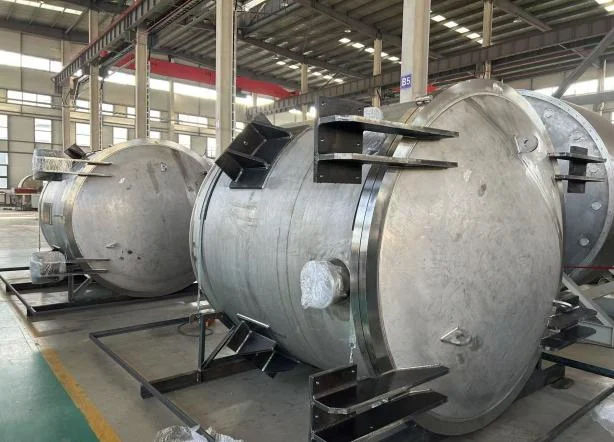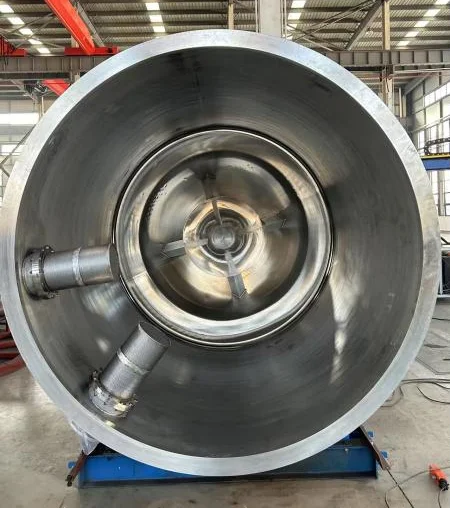- This topic is empty.
-
AuthorPosts
-
2025-05-21 at 6:03 pm #3490
In today’s industrial landscape, efficiency, reliability, and automation are central to the optimization of bulk material handling systems. Whether in cement manufacturing, mining operations, chemical processing, or ceramic production, the need for seamless material transfer is universal. One piece of equipment that plays a critical role in enabling high-performance, automated material flow is the vacuum feeding tank.
As a global supplier of steel casting and welded fabrications, China Special Metal Group Limited (CSM) provides advanced vacuum feeding tank solutions that cater to the evolving demands of industries handling abrasive, powdery, or granular materials. This article explores how vacuum feeding tanks support and enhance process automation, making them indispensable in modern bulk material systems.
Understanding the Role of a Vacuum Feeding Tank
A vacuum feeding tank is a specialized vessel used in pneumatic conveying systems to draw in and temporarily store bulk materials before transferring them downstream in the production process. It operates under negative pressure (vacuum) and is often integrated with other automation equipment, including blowers, rotary valves, and control systems.
In essence, a vacuum feeding tank functions as an intermediate receiver that bridges the gap between material supply points and processing stations, ensuring continuous and controlled material flow.

Key Components and Working Principle
A typical vacuum feeding tank system comprises the following core components:
1. Vacuum Pump or Blower: Creates negative pressure to pull materials from the source.
2. Feeding Inlet: Connected to the source silo, hopper, or upstream equipment.
3. Filter System: Prevents fine dust or powder from escaping or contaminating the system.
4. Level Sensors: Detect when the tank is full and signal the system to stop or transfer material.
5. Discharge Outlet and Valve: Releases the collected material into the next stage.
6. Control Panel: Manages vacuum cycles, valve timings, and coordination with other machinery.
The system works in cycles, alternating between suction and discharge phases. During the suction phase, the tank pulls material into the chamber. Once a predetermined fill level is reached, the suction stops, and the discharge valve opens to deliver the material to the next processing step.
Enhancing Process Automation Through Vacuum Feeding Tanks
Vacuum feeding tanks contribute significantly to automation in the following ways:
1. Precise Material Metering and Transfer
Automated bulk systems rely heavily on accurate material quantities. Vacuum feeding tanks ensure consistent material volumes by using level sensors and programmable logic controllers (PLCs). This precision helps reduce material waste and maintain product quality across continuous or batch processes.
2. Seamless Integration with Control Systems
Modern vacuum feeding tanks can be seamlessly integrated into distributed control systems (DCS) or supervisory control and data acquisition (SCADA) platforms. Operators can monitor tank status, control timing, and make remote adjustments in real-time. This level of integration streamlines decision-making and boosts operational efficiency.
3. Reduced Human Intervention
Manual material handling not only slows production but also increases the risk of contamination and safety hazards. By automating material transfer, vacuum feeding tanks reduce the need for human intervention, enabling 24/7 operations with minimal labor requirements.
4. Minimized Dust and Spillage
Dust control is a major challenge in bulk material handling, especially in cement, chemical, and mining applications. Vacuum feeding systems operate in enclosed environments, minimizing dust release and promoting a cleaner, safer workspace. This reduces cleanup time and ensures compliance with environmental and occupational safety standards.
5. Flexible System Configuration
Vacuum feeding tanks can be adapted to different plant layouts and material characteristics. They support a wide range of bulk densities, flow behaviors, and particle sizes. With adjustable suction and discharge cycles, they can be tuned to meet varying production rates, making them highly flexible for multi-product operations.

Applications Across Key Industries
The benefits of vacuum feeding tanks span multiple industries:
1.Cement & Building Materials: For feeding fly ash, gypsum, or limestone powder in mixing and kiln processes.
2. Mining: Transporting fine ore dust, metal powders, and tailings with reduced environmental impact.
3. Chemical & Petrochemical: Handling hazardous or fine materials safely, including catalysts, resins, or powders.
4. Ceramic Industry: Feeding clay, feldspar, and glaze materials into forming machines with high accuracy.
5. Food Processing: Transferring flour, starch, or sugar in hygienic conditions.
Importance of Quality in Vacuum Feeding Tank Design
The performance of a vacuum feeding tank greatly depends on the quality of materials and fabrication. At CSM, we leverage high-strength steel casting and precision welding to ensure durability, pressure resistance, and long service life. Our designs also consider easy maintenance and compatibility with various system configurations.
Key quality factors include:
Corrosion and abrasion resistance
Air-tight seals to maintain vacuum integrity
Reliable valve mechanisms for smooth discharge
Ease of inspection and cleaning

Conclusion
Vacuum feeding tanks are vital components in the journey toward fully automated, clean, and efficient bulk material handling systems. Their ability to provide precise, hygienic, and uninterrupted material transfer positions them as a core element of modern industrial infrastructure.
For manufacturers seeking durable and high-performance vacuum feeding tanks, China Special Metal Group Limited (CSM) stands ready to deliver engineered solutions backed by expert craftsmanship, premium materials, and global service support.
Contact us today to learn how CSM’s vacuum feeding tanks can elevate your automated material handling processes.
E-mail:sales@special-metal.com
http://www.special-metal.com
China Special Metal Group Limited (CSM) -
AuthorPosts
- You must be logged in to reply to this topic.
